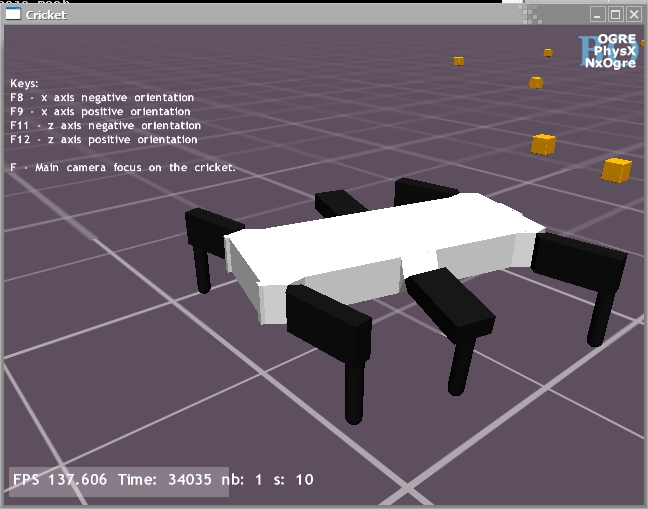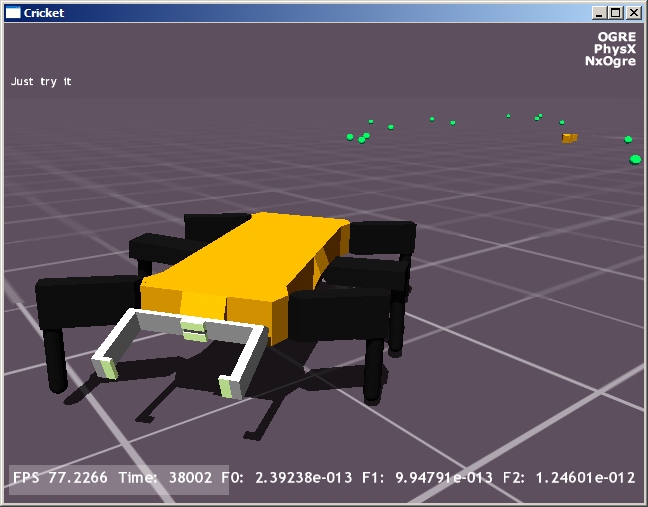Hi, all
These days, I was practising PCT on my own simulated robot cricket whose screenshots was attached to this mail. There’re two editions, and I’m working with the white one now. The robot uses three servos to control 6 legs. Two legs in a group. I hope the robot could learn to walk towards foods (yellow cubes) all by itself at last. And I have some questions here:
-
Do control system need new controllers?
Now that the objective of control is the perception, controllers may be fixed to correspond perceptions. If the number of perception nodes is fixed, controllers are already prepared as well, there’re only some parameters to adjust. Though it sounds impossible, fixed controllers can’t deal with the new challenge. However, in other part of human’s body, some mechanisms do prepare for “everything”. Patterns of geometry in the vision, antibodies (all discriminating proteins on antigen are “considered”) and so on are such examples. -
In Bill’s
reorganization experiment program, connections between perceptions and output devices are in the same field. The perception of joint angle is related to the output of muscle while the input from nose can’t related to any output device directly. What about other perceptions? Who decide which input could be connected to output devices?
Articles emphasizes only perceptions in the first level could be connected to the output organs. Are all perceptions able to connect to all ouputs? or just part to part
- Why only child, especially infants and babies, are able to rebuild their neural systems when they encounter some physical problem? If an adult is disabled for a long time, even if his organ could be cured, he still lose his ability.
It seems that re-organization of output device only happen when people was young. Or like what cells do. An embryo has ability of turning into any kinds of cells, while a mature cell lose this ability for good even it has the
same DNA with the embryo.
However, study, another kind of organization, exist in man’s whole life. Their principles may be quite different. Related to question 2, these two sorts of organization may deal with different fields. Direct linkage and indirect linkage
- What changed in our control system when we change my behaviour. When I walk towards a bike and then ride on it, what happened in my brain?
Or behaviour is just linguistic. Human beings get used to analyse issues with the usage of classification. May be in the brain, there’s no distinct “borders” between actions that apears different.
- How to convert the unit?
When I’m manipulating a joystick to control a simulated plane on the computer screen, the translation from unit of the vision perception to unit of the perception of my arm do exist. Consider it as a black box, levels and transfer paths in it are ignored.
Only the parameter “Ko” is enough? What if the controllers has
to send signals to tens of different controllers which have different unit?
To place the translation function on connections is a method. In this way re-organization and memory (storing information and generating new connections) could be integrated.
Best regards,
Bo

